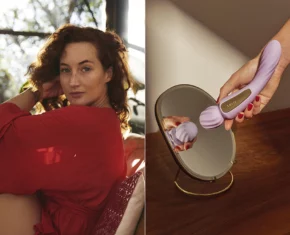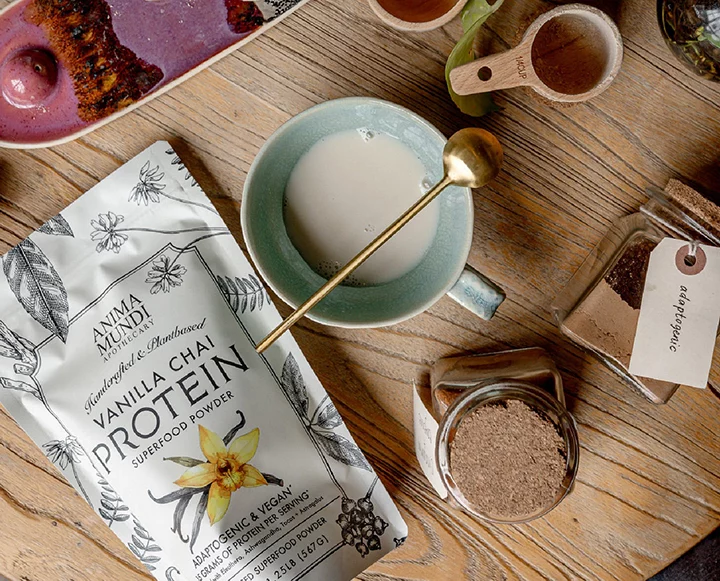Not all that’s gluten-free is gold. While a box of flourless cookies could seem like a dream for the grain-averse, it could also be packed with preservatives and sugars – which isn’t exactly an ideal swap. As embracing a GF lifestyle is easier than ever, we think a little extra awareness is in order: fave functional medicine pro, Dr. Mark Hyman, is answering the question of how to to build healthy gluten-free habits, and what to do if they’ve slipped to the dark side…
We are all aware that “gluten-free” has become a major buzz term. Restaurants proudly offer options like gluten-free bread and even mainstream supermarkets have whole aisles dedicated to the trend. Nearly everyone has jumped on the gluten-free bandwagon. I don’t recommend this to everyone – at least not until you understand a few facts… and here’s why: As a doctor who treats sick patients, I find that gluten often is a major cause of digestive, auto-immune, weight, mood and neurologic problems. While one would think that I would be 100% pro gluten-free, I want to be clear that there are some downsides to this trend.
The biggest problem with demonizing a food substance is caused by the food industry. In a nutshell, this industry manipulates basic foods items and turns them into “Frankenfoods.” It does this by removing naturally derived ingredients and adding in other bad stuff to make up for loss of taste, consistency, etc. Witness the past popularities of, say, low-carb or fat-free diets and the so-called healthy fake foodstuffs that manufacturers invented to replace the foods containing the maligned ingredients.
As gluten-free gains popularity, food companies – that are well-aware of a potential marketing opportunity – turn out processed, sugary junk foods as “healthy” gluten-free alternatives. Look at most grocery aisles and you’ll find gluten-free chocolate chip cookies, breads and pretty much any conventional sugary, junky food. If a food label boasts a health claim, chances are that food (or food product, more likely) is not good for you.
So while those cookies say “gluten-free” in big bold letters, turn the box around and read the ingredients. You will find high-sugar content, flour (which converts to sugar) and weird food-like additives that add up to big profits for these companies, while adding pounds around your midsection and sabotaging your health. Sometimes patients switch from cupcakes and cookies to gluten-free cupcakes and cookies. And then they wonder “Why do I feel like crap and struggle to lose weight?” Please don’t shoot the messenger, but gluten-free cupcakes and cookies are still cupcakes and cookies. Besides usually being higher in sugar and other junk ingredients, the “gluten-free” claim creates a health halo so you’re often reaching for seconds and thirds. These gluten-free, sugar-loaded, flour-filled foods raise blood-sugar levels and contribute to inflammation, both of which play a role in nearly every disease on the planet.
Don’t be fooled: Gluten-free junk food is still junk food loaded with artificial sugars, food coloring, added gums to help things stick together and additives to increase shelf life while decreasing yours. You might as well just have a soda because it all breaks down into sugar and by the way, I recommend none of the above.
Gluten-free products are also often filled with a health-harming fat, such as processed vegetable oils or hydrogenated oils and trans-fats. These clear, tasteless, highly refined and processed oils include corn, soybean, canola, safflower and sunflower oils. Like sugar, these inflammatory omega-6 fats crank up inflammation while blocking anti-inflammatory omega-3 fats.
When I tell patients to eat a gluten-free diet, I don’t give them license to eat gluten-free cookies or gluten-free bread. Remember: Nature created its own gluten-free diet – an avocado is gluten-free, as are almonds! Go gluten-free, but do it correctly. Here are nine take-aways I recommend to my patients who are confused about how to go gluten-free without falling into the duplicitous food-industry marketing trap:
9 Healthy Habits for Gluten-Free Living
Eat real food
Go one step further and avoid all foods with labels. Here’s an extra step to guarantee you avoid sugar, trans-fats and other junk ingredients: Just eat real, whole foods! It’s really that simple. Before you analyze numbers or anything else on a label, ask yourself if this food could have been served at your great-grandmother’s table. Odds are, she only served real food.
Cook at home
The cure for what ails you — in your body and in our nation — can be found in the kitchen: the very first step to reclaiming your health.
Beware of trigger foods
The industrial food system has created uncountable food-like substances that hijack your biochemistry, creating hunger, obesity and disease. Your taste buds become manipulated, your metabolism spins out of control and your brain gets addicted to that slick sugar-salt combo pumped into factory-made foods, yet your biochemistry cannot handle these foods. If it sounds too good to be true – we’re looking at you, gluten-free oatmeal raisin cookies – it probably is.
Check your mindset about cost
Stop buying into the myth that “healthy food costs more.” We have become brainwashed thinking cooking real food costs too much, is too hard and takes too long, so we rely on “inexpensive” convenience foods that ultimately take a toll on our wallets and our health. We trade health for “convenience” that hardly proves convenient when we become sick. Research shows eating real food doesn’t have to be more expensive or take longer to make.
Tighten your wallet
Make your own food in your own kitchen. Use fresh fruits and vegetables, grass-fed and organic meats (focus more on plant foods if these are too expensive), healthy fats and whole grains in their whole kernel form if you can tolerate them. For more strategies, check out the Environmental Working Group’s “Good Food on a Tight Budget.”
Tally it up
Always ask how many steps did it require for food to get from the farm to your fork? If it took a pit stop in a factory or was made in a factory, avoid it! Like Michael Pollan said, if was grown on a plant, eat it; but if it was made in a plant, don’t eat it. Naturally gluten-free foods don’t come in a box and certainly don’t have a ton of weird ingredients.
Eat out smartly
If you eat out, choose the restaurant yourself to find the best quality with the most options. Remember, gluten-free menus are great, but don’t replace one bread or pasta with an even worse form of bread or pasta (based on the weird ingredients used to replace the gluten and the effects they have on your blood sugar). Choose grilled or baked chicken, fish or another protein and pair it with a side or two of vegetables and some healthy fats like avocado and extra-virgin olive oil.
Be suspicious of health claims
Don’t let the food industry trick you. If you see a health claim on the label, be very suspicious: The label is food marketing at its cleverest, designed to seduce you into an emotional purchase that tricks you with misleading claims.
Study the ingredients
Pay attention to the order in which ingredients are listed. If a real food is listed at the end and sugar or ingredients that you don’t recognize are listed at top, put it back. The most abundant ingredient is listed first. Others are listed in descending order by weight. If you see any words on the label you can’t pronounce, you should definitely avoid it.













